The flash of a pulsar about 3,000 light-years from our solar system was caused by a ‘black widow’ binary consuming a smaller star. Intriguingly, a third companion star is orbiting the pair, which may have originated near the Milky Way’s center. Plus, the Sun is ramping up, Chandra releases more sonification videos, and this week’s What’s Up is all about occultations.
Podcast
Show Notes
Black widow star circles hourly
- MIT press release
- “A 62-minute orbital period black widow binary in a wide hierarchical triple,” Kevin B. Burdge et al., 2022 May 4, Nature
New method of space navigation uses old stars
- UIUC press release
- “Characterization of Candidate Solutions for X-Ray Pulsar Navigation,” Kevin Lohan and Zachary Putnam, 2022 February 22, IEEE Transactions on Aerospace and Electronic Systems
How do you like your eggs? Robot-tasted!
- University of Cambridge press release
- “Mastication-Enhanced Taste-Based Classification of Multi-Ingredient Dishes for Robotic Cooking,” Grzegorz Sochacki, Arsen Abdulali, and Fumiya Iida, 2022 May 4, Frontiers in Robotics and AI
Building space to test solar cells
- The University of Oklahoma press release
- “Countdown to perovskite space launch: Guidelines to performing relevant radiation-hardness experiments,” Ahmad R. Kirmani et al., 2022 April 11, Joule
The Sun is literally bursting with energy
- Strong Solar Flare Erupts from Sun (NASA)
- Sun Releases Strong Solar Flare (NASA)
- Moderate Solar Flare Released by Sun (NASA)
- Sun Releases Moderate Solar Flare (NASA)
Chandra releases new sonifications
- CXO press release
- VIDEO: Black Hole Sonification Remix (CXO)
Comet has unusual tail shape
- Ural Federal University press release
- “Evolution of the dust trail of comet 17P/Holmes,” Maria Gritsevich et al., 2022 March 29, Monthly Notices of the Royal Astronomical Society
What’s Up: Occultations
- Discovering Pluto’s Atmosphere (Sky & Telescope via ADS)
- SOFIA successfully observes challenging Pluto occultation (Astronomy)
- Capturing an Occultation and a Snapshot of Pluto’s Atmosphere (SETI Institute)
Transcript
Today’s news is full of the wild, the weird, and well… the kind of awesome. First, we have a black widow binary.
Then there’s a robot learning to taste food.
And our middle section today is brought to you by the letter S, with solar cells, solar flares, and sonification. And cometS…
That last one was a bit of a reach. Finally, I’ll talk about occultations in this week’s What’s Up.
All of this and more, right here on the Daily Space.
I am your host Dr. Pamela Gay.
And I am your host Erik Madaus.
And we’re here to put science in your brain.
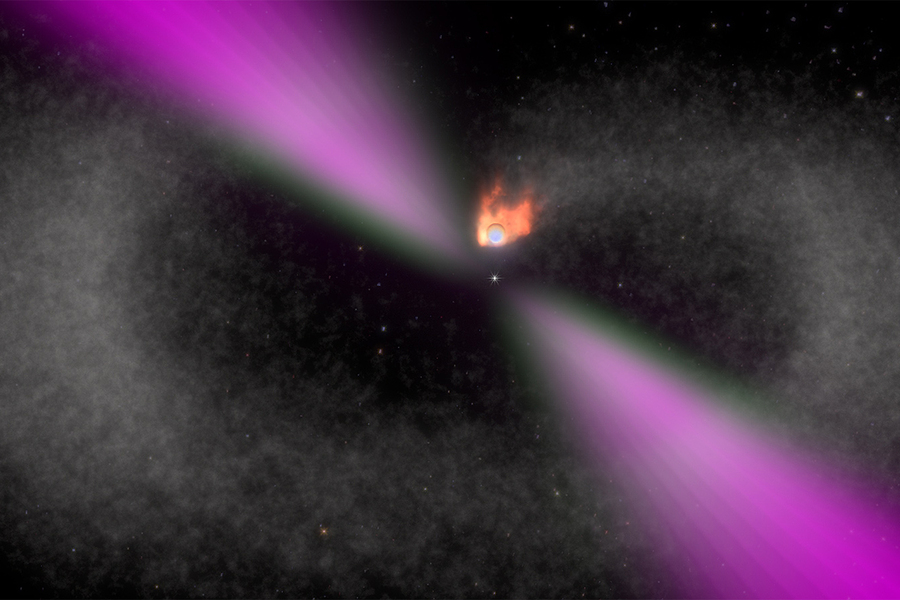
Folks, it is a star-eat-star world out there. Earlier this week, we mentioned a supernova explosion that came about from a star having its atmosphere eaten off. Now, we have news from MIT of another star system that includes a tiny, dense pulsar that is pulling material off its nearest companion star, while a third star shines on from a safe distance.
The two inner stars circle in a deadly tango every 62 minutes, while the outer object goes around every 10,000 years.
Cataloged as ZTF J1406+1222 and classified as a black widow binary, the inner pulsar is sustaining its high-speed spin by stealing rotation from its mate. Normally, pulsars slow down over time, but black widows instead devour mass, and with it angular momentum, from their companion stars, allowing them to look younger than they are and to stay young looking longer.
This really is the stuff of a horror novel.
The roughly one-hour orbit of the pulsar and its dying mate is the shortest orbital period so far observed for this kind of system. It also varies in optical brightness in a novel way: the pair appears to dim and fade by a factor of thirteen. This can’t be explained just as the one star blocking the light from the other and then allowing it to be seen again. Instead, it appears that the larger-sized and lower-mass companion is being heated up by the pulsar and locked in a death grip. As the two orbit, the heated side of the companion comes in and out of view, and that heated side is just brighter; it is like it is screaming out in light to point out where it is being destroyed.
Have I mentioned astronomers like to anthropomorphize things?
The Universe is a violent place, and nothing is safe from the pull of gravity and the blast of light. Black widows abound, and the stellar variety is amazing in their destruction.
This work appears in the journal Nature and is led by Kevin Burdge.
From tracking stars, let’s now turn to tracking spacecraft.
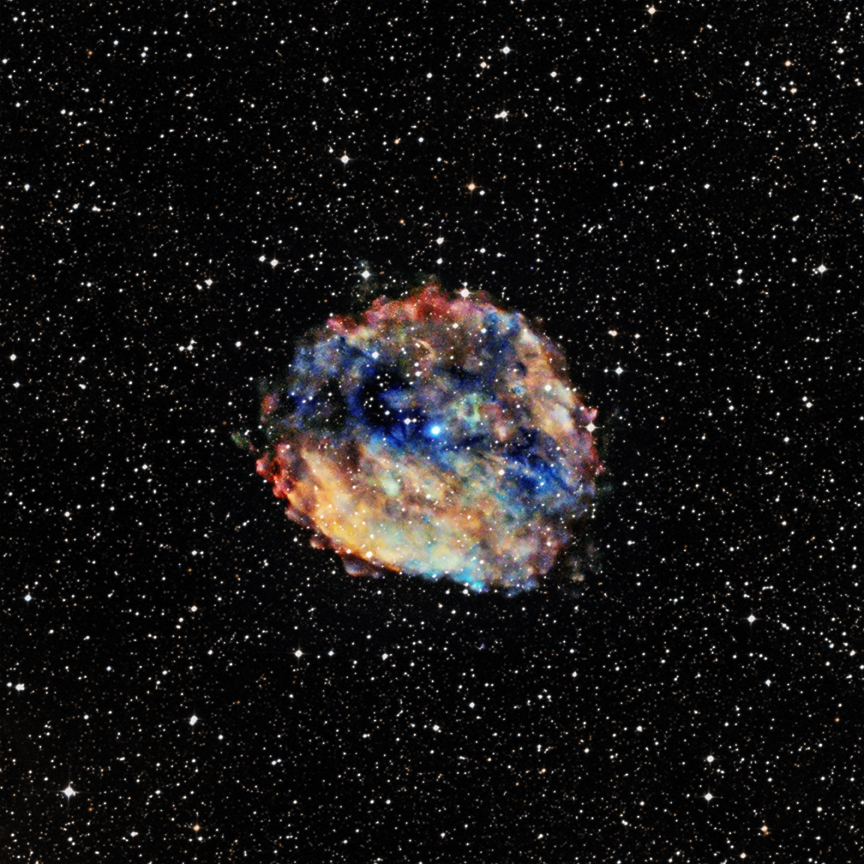
The current system for determining a spacecraft’s attitude in space requires several radio transmitters on the ground and star trackers on the spacecraft. The problem with this method is that the radio transmitters need to be used for other things as well, and star trackers can wear out.
Researchers from the University of Illinois Urbana-Champaign propose a new method, and it uses pulsars. This method uses basic triangulation to determine the spacecraft’s rough location to within a few astronomical units, and a special algorithm narrows down that range by carefully looking at the unique signatures of different pulsars.
The team analyzed signatures of over 2,000 pulsars to generate this algorithm. This new method promises to increase spacecraft self-sufficiency by allowing it to determine its position with no outside information. Spacecraft autonomy is becoming more and more advanced. This work was published in the IEEE journal Transactions on Aerospace and Electronic Systems.
Sometimes, a press release comes across the newsfeed that makes us stop, stare, giggle, and decide we have to share it with all of you. This is one of those stories.
Researchers at the University of Cambridge have been working with appliance manufacturer Beko to train a robot chef to taste food. But it’s not just about tasting food. No, they’re training the robot to keep tasting the food as it mashes it up, simulating how the taste changes as you chew. The results were published in the journal Frontiers in Robotics & AI and are hoped to help aid in the development of automated food prep.

After all, you want your robot chef to be a decent chef, and since human chefs taste as they go, it made sense to do the same with a robot chef. However, first, you have to train the robot to know what is pleasing to the human palette. In this particular research, the team focused on the saltiness of the dish prepared – scrambled eggs and tomatoes. According to the press release, the robot “tasted nine different variations…of scrambled eggs and tomatoes at three different stages of the chewing process, and produced ‘taste maps’ of the different dishes.”
As for how the robot tasted the food, that involved a conductance probe attached to the robot’s arm. The probe then acts as a salinity sensor, which the robot moves in a grid pattern to take different “tastes” of the dish. Not surprisingly, this new method helped improve the robot’s ability to assess the saltiness of the dish against the previous method, which just tested a single sample one time.
Don’t go expecting to buy your Star Trek-style food replicator any time soon, though. These robot chefs still need to figure out other flavors like sweet and oily.
Coming up next, we have solar power, solar flares, sonification, and the shape of cometary dust.
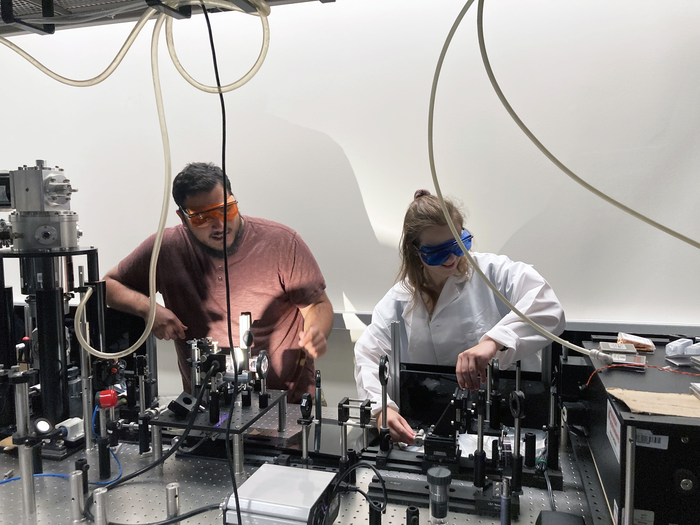
Satellites and other spacecraft, landers, and rovers are often powered by solar cells. Capable of working for years without replacement, they are a proven technology, but they are also a technology that can be improved. Over time, solar panels degrade in the harsh space environment, where they are plagued by radiation. Here on Earth, researchers are constantly trying to find new, more rugged, efficient, and construction-friendly designs to integrate into a clean power future.
And it turns out that a new design of solar panels – perovskites – that suffer on Earth may be perfect for space. Researcher Ian Sellers explains: Perovskites are exciting to a lot of people in the photovoltaics community because this new solar cell material can reach high efficiencies and has done so quickly and relatively simply. But these materials also have significant issues in terms of stability and yield, particularly in atmospheric conditions – moisture, oxygen degrades this material, so it was interesting that there were a few people who suggested that despite these terrestrial instability issues, this system appeared radiation hard and appropriate for space.
To test this possibility, the environment of space needs to be brought to Earth or at least simulated in a lab. A new paper in Joule that is led by Ahmad Kirmani details what kinds of conditions need to be simulated with this novel solar technology.
And I mean novel. Sellers goes on to explain: These perovskites are very close to being like a liquid, so when they’re damaged, they self-heal. Perovskites, like a tub of water, will be disordered and damaged in space, but will also very quickly settle or heal and go back to normal. What we’ve done is to create a protocol, a set of conditions that perovskite cells must be tested at before they go into space, so that the global community is testing these materials properly and in the same way.
Solar cells of the future may be weird. They will certainly be wonderful. I can’t wait to see them come into being.
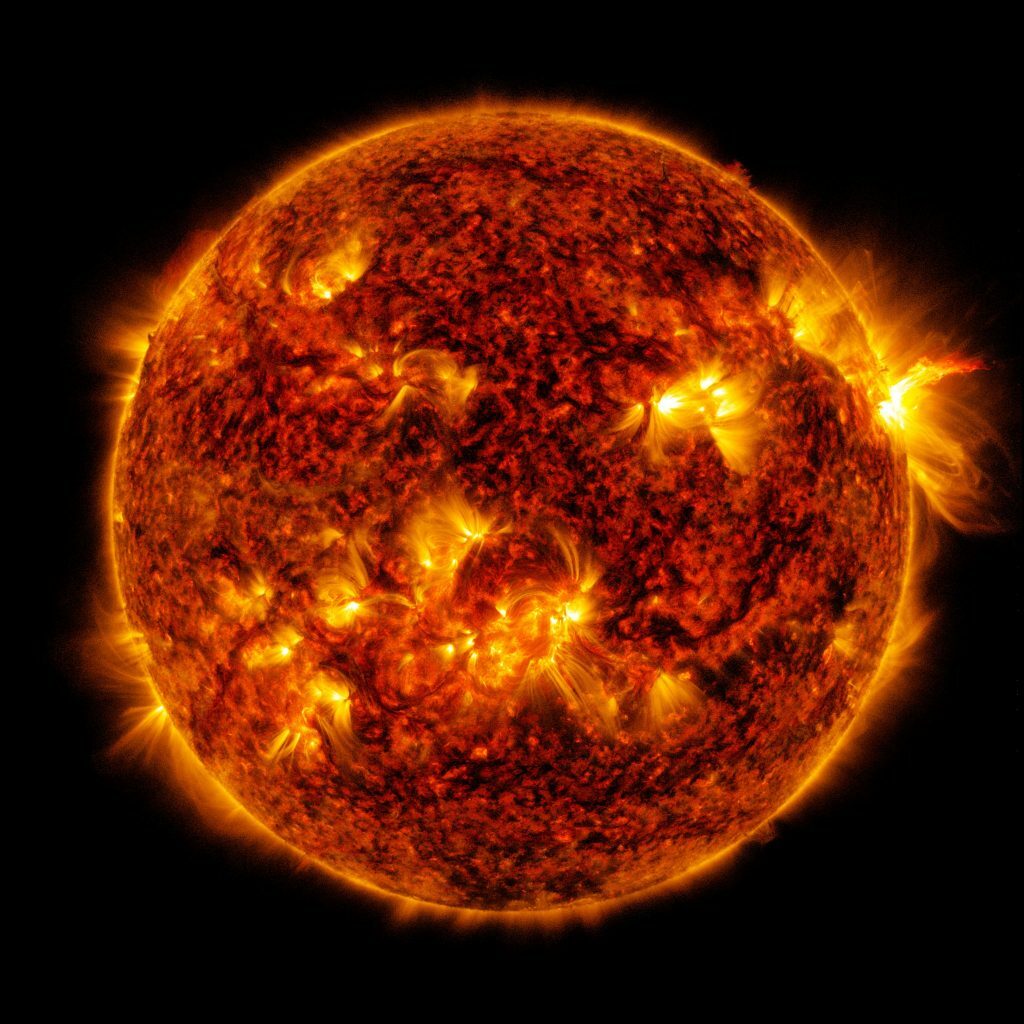
All this research into solar power and solar cells is coming at a time when the Sun itself is amping up the energy. It seems like every few days we get another bulletin about a solar flare, and this week is no exception.
On May 3, NASA’s Solar Dynamics Observatory (SDO) caught a moderately sized flare that has since been classified as an M-class flare. M-class flares are not the most intense flares – those are the X-class flares – but they are fairly common when the Sun is active. In fact, there was another M-class flare just yesterday, May 4, which was also imaged by SDO.
But wait, there’s more.
Also on May 3, there was an X-class flare. According to NOAA’s Space Weather Prediction Center: HF (high frequency) communication may have been prone to contact loss over the Atlantic Ocean, and portions of eastern South America, western Africa, and Europe.
And there was even another X-class flare observed on April 30. Talk about heading into a solar maximum.
As a reminder, these flares are not directly harmful to people on Earth, but they do pose a risk to astronauts and spacecraft. They can also impact our power grids and navigation systems, which could definitely cause trouble for humans. On the other hand, powerful flares can make for some pretty aurorae. And if you have a telescope set up for safe solar observations, you can even take a look at all the sunspots causing the solar flares. But remember, never look directly at the Sun without proper safety gear.
If you are set up for solar astrophotography, please share your sunspot images with us on Twitter, as we do love pretty pictures.
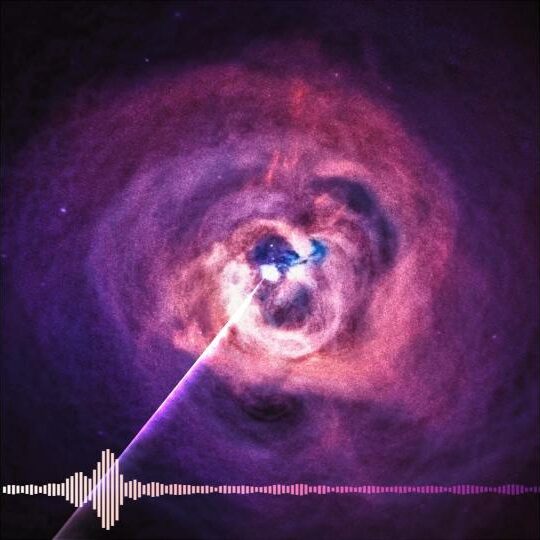
Astronomy is not all about pretty pictures, because some people can’t see them. The process of turning pictures into sound, or sonification, has been around since the mid-1970s. Researchers first applied this technique to the area around the supermassive black hole Sagittarius A* in 2020, and have expanded it to other targets in later years.
The latest Chandra X-ray Observatory project, the fifth in the series, involves actual sound waves for the first time. Space is generally not dense enough for sound to travel, but the center of galaxies – such as the Perseus Galaxy Cluster – has enough material for sound waves to travel through, and these are recorded in the new sonification. However, the sound waves are very faint, so to produce something audible by a human, the data was boosted by almost 60 octaves, 288 quadrillion times louder than the original. That’s 28 with fifteen zeros.
The sound is plotted radially, to show that the cluster’s gas extends different amounts in different directions. I’ve listened to it and my impression is that it’s spooky. Beth agreed and also said that it sounded like a deep whale song mixed with zooming race cars. We’ll have a link to the recording in the show notes for today’s episode at our website, DailySpace.org.
Another sonification released by the team is of the famous black hole in Messier 87. This one includes three different tracks showing how the object looks in X-ray, visible, and radio light. For this sonification, instead of actual sound waves, “each wavelength is mapped to audible tones”. One can hear (and see, as the sonification is accompanied by a picture of each wavelength and a waveform) the differences in the intensity of light produced by the different wavelengths of this object. I found this one more pleasant to listen to, but it is more processed compared to the Perseus one.
We haven’t quite gotten to the What’s Up segment just yet, but this next story is about something that you can see in the night sky if you have a big telescope.
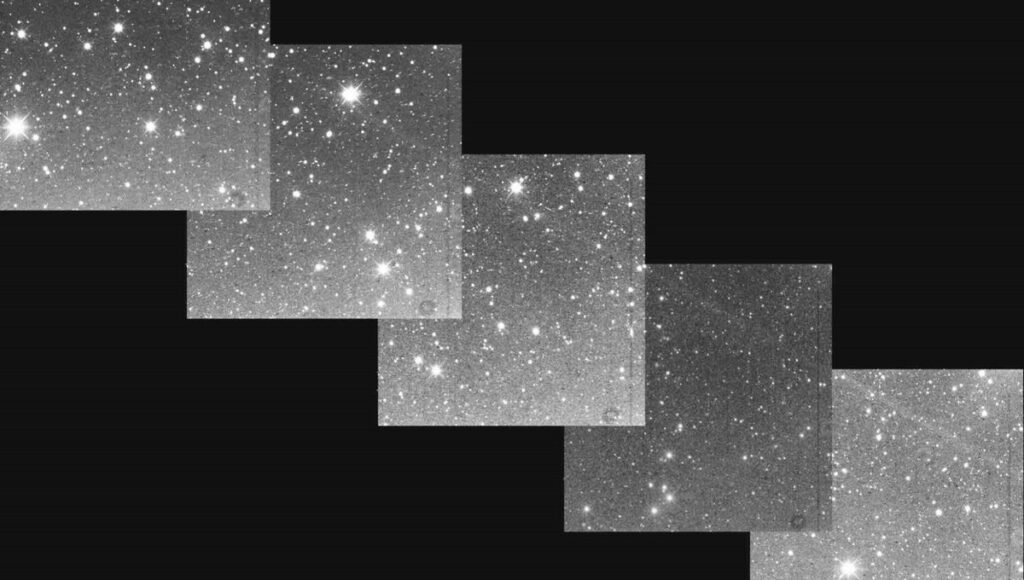
A team of scientists in Finland has been tracking the orbits of particles coming off of Comet 17P/Holmes since 2013. They have found that these particles trace out an hourglass shape, with the north and south sides of the cometary tail collecting particles in what they call nodes. These nodes give some insight into how the comet evolved.
Back in 2007, the comet got significantly brighter, and its core expanded, shedding more particles in what is called a cometary outburst. By understanding the paths these particles have taken, the team can plot their way back to where that original outburst occurred in the comet’s orbits. And this new research can help scientists predict the location and intensity of meteor showers.
Maria Gritsevich, project leader, concludes: We predict that with our published data on the time of arrival and the corresponding coordinates of the dust trail of the comet 17P/Holmes in 2022 it will be visible even in the telescopes of amateur astronomers. We expect that the results of their observations will provide additional information about the number and size of the particles and their geospatial distribution. This information will be useful for developing new models and understanding what happens to the comet and its trail.
Next, the team plans to focus on the reasons for the sudden outburst and increase in brightness, as well as simulate an outburst and observe the results.
Coming up next, Erik brings us that What’s Up segment and explains occultations.
What’s Up

This week in what’s up is an astronomy phenomenon called an occultation. To put it simply, an occultation is when some object passes in front of another, such as a background star. This method has been used in astronomy for a long time, mainly to refine the orbits of different planets and asteroids. You can actually see occultations for yourself with a telescope or binoculars.
Another way to use occultations for science is to explore the atmospheres of planets, such as what astronomers did with Pluto. A stellar occultation proved that Pluto had an atmosphere in 1988. This discovery was made with the Kuiper Airborne Observatory, the predecessor to SOFIA.
Additionally, the New Horizons spacecraft planned to pass by Pluto when its atmosphere was most active, and it did, in 2014, capturing images of the atmosphere during the spacecraft’s flyby.
Scientists used later occultations to monitor the atmosphere of Pluto as it shrunk, and some citizen scientists even contributed. Pluto passing in front of a star allowed the atmosphere to be separated from the planet and also allowed for a better solution to its orbit by timing how long the star’s light was blocked and doing some math.
Telescopes from the (soon to be retired) SOFIA infrared telescope in its 747 to the commercial Unistellar eVscope were used to observe different occultations. These observations were done in 2011, 2016, and 2018. SOFIA observed an occultation in 2011, and it was challenging because the orbit prediction was not completed until two hours before the airplane took off, which required changing the flight plan. SOFIA was designed to track events such as occultations that move over the surface of the Earth at a relatively fast speed, allowing for more observation time.
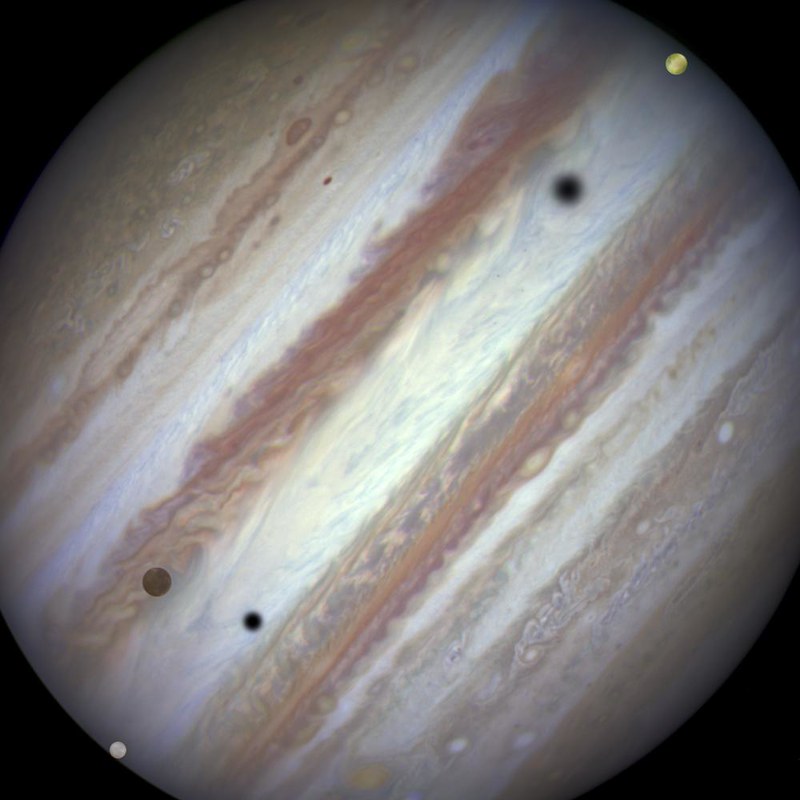
The team on the next occultation I’ll talk about only gathered data for ten seconds. That team from the SETI Institute used a Unistellar eVscope along with a much bigger 14-inch Schmidt-Cassegrain in California to observe the 2018 occultation. They were joined by other teams in North America, using equipment provided by a French observatory. All of the telescopes combined to produce data on Pluto’s atmosphere. The eVscope has been used for even more citizen science since then.
Now about viewing an occultation for yourself. There are several occultations you can view in the month of May 2022 using a backyard telescope. One has already happened; Ceres was a tenth of a degree from the Moon on May 1. On May 19 at 0800 UTC, Vesta will be within seven-tenths of a degree of the Moon. On May 22 at 1800 UTC, Mars will be within nine-tenths of a degree from the Moon. And on May 24, Uranus will be within five-hundredths of a degree of the Moon at 22:00 UTC.
All of these events would be true occultations where the Moon covers these different objects if the observer was anywhere on Earth but North America. However, they are still worth seeing because they will get super close to the Moon.
Another type of occultation is a transit, where an object passes in front of another but does not completely cover it. A transit that you can see regularly is the passing of the four Galilean moons – Io, Callisto, Ganymede, and Europa – in front of the disk of Jupiter.
These transits are best viewed in a small telescope but can be seen in binoculars. And they happen often enough that there may be several during the night where you are. We recommend the Shallow Sky website to see when transits are happening and will have a link to their Jupiter page in our show notes for this episode.
Next week, you can also look forward to the Moon, which will be at perigee on May 14, making its angular size a few percent bigger and causing larger tides.
Remember, get outside and look up, weather permitting, of course.
This has been the Daily Space.
You can find more information on all our stories, including images, at DailySpace.org. As always, we’re here thanks to the donations of people like you. If you like our content, please consider joining our Patreon at Patreon.com/CosmoQuestX.
Credits
Written by Pamela Gay, Beth Johnson, Erik Madaus, and Gordon Dewis
Hosted by Pamela Gay, Beth Johnson, and Erik Madaus
Audio and Video Editing by Ally Pelphrey
Content Editing by Beth Johnson
Intro and Outro music by Kevin MacLeod, https://incompetech.com/music/


 We record most shows live, on Twitch. Follow us today to get alerts when we go live.
We record most shows live, on Twitch. Follow us today to get alerts when we go live.